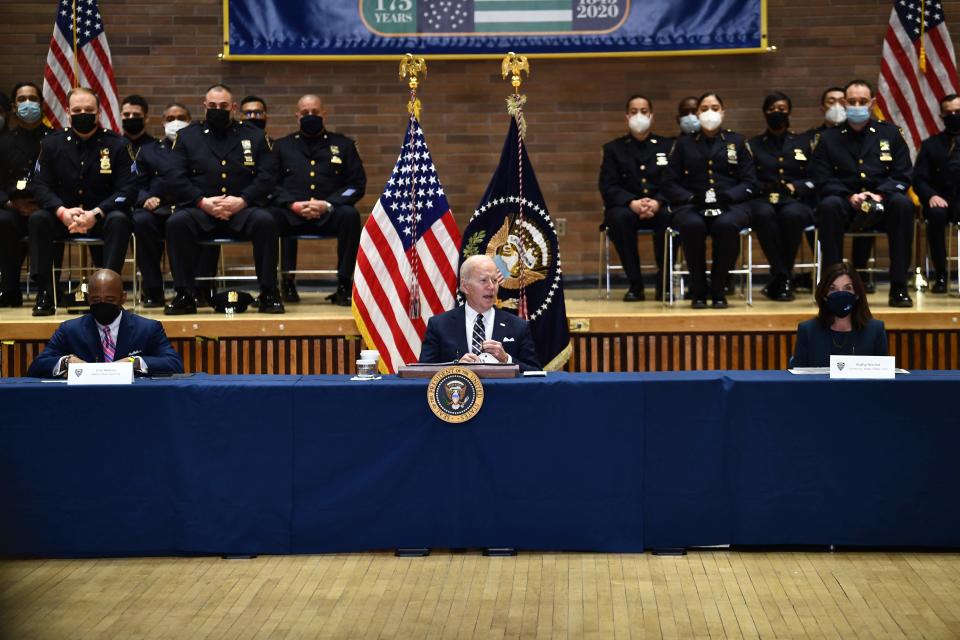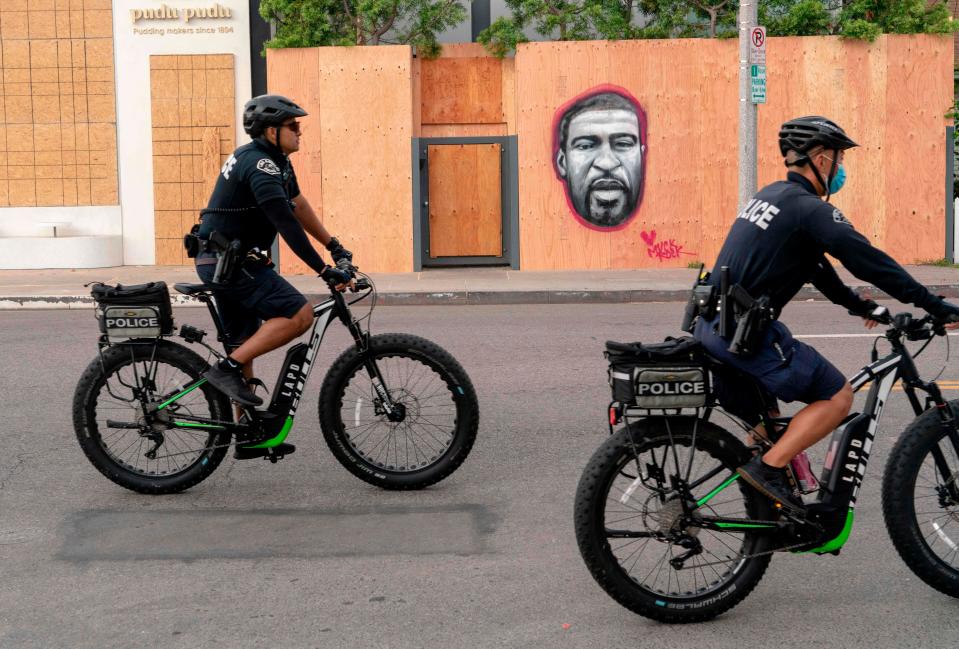What does 'community policing' even mean? Outdated buzzwords can't fix policing problem.
Along with his vow to "fund the police," President Joe Biden assured Americans during his State of the Union speech, "I know what works: Investing in crime prevention and community police officers who'll walk the beat, who’ll know the neighborhood, and who can restore trust and safety." He is so confident in this strategy that his budget proposal includes $30 billion in mandatory spending to support law enforcement, including funding for more community police officers.
Biden is latching onto a popular idea from the past without addressing its biggest problem: There is no clear-cut definition for what it means and how to apply it in everyday practice. The only hint lies in the suggestion that it involves officers who walk community "beats" and are therefore known among community members. But studies show it is not the mere presence of the police in the community that matters, but how officers interact with the members of the community on a daily basis.
What exactly is community policing? Ask 10 police officers to define it and you will get 10 different answers. If the administration is centering police reform around this concept, we first need to figure out exactly what it is.
What's legally justified? Whether the Grand Rapids cop who shot Patrick Lyoya was afraid isn't the key question
Key to crime control
Community policing gained popularity in the 1990s when President Bill Clinton pledged to put 100,000 additional police officers on America's streets to curtail rising crime rates. The concept was based on a growing body of research suggesting the community was key to crime control.
In 2004, the National Research Council explained it this way: "Community policing suggests a reliance on a more community-based crime control that draws not only on the resources of the police but also on the resources of the public."

While many police departments have adopted some variation of this idea, there has never been a conceptual framework defining what community policing means. Each police force has defined and applied it differently.
In 2014, the Major Cities Chiefs Association, whose membership represents the largest police agencies in North America, identified in a survey a wide range of practices its members considered to be community policing – from citizen ride-alongs and community volunteering to bicycle and foot patrolling. A 2018 report on Proactive Policing from the National Academies of Sciences, Engineering, and Medicine also recognized this lack of commonality in community policing models.
Documenting the police: What you need to know to video record officers in action
The good news is that over the past 25-plus years, there has been a lot of empirical research that provides evidence-based models for how to apply community policing in a way that builds trust while also promoting public safety. One such model is procedural justice – a theory based on meeting the expectations of citizens that they will be listened to and will experience neutral, unbiased and transparent decision-making by honest and well-intentioned police officers.
Research shows that when these expectations are met, the public perceives police as legitimate and are more inclined to defer to law enforcement authority in the present and collaborate with police in the future, even to the extent of being more inclined to obey the law.
As the Proactive Policing report explained, law enforcement need the public’s support to control crime, and authorities can earn that support by changing the way they engage the public from warrior to a service or guardian approach. Procedural justice provides guidelines on how to do that in a way that earns public trust.
Commit to building public trust
Here are some examples of what this looks like in practice:
►Officers complete training in procedural justice, de-escalation tactics and situation-specific responses.
►Police values, the way they measure success, and indicators of success or failure are transparent to all community members.
►The use of traffic stops is limited to circumstances that promote public safety, and when it is necessary, officers explain why they are stopping people and acknowledge their cooperation during the stop.
In 2015, President Barack Obama's Task Force on 21st Century Policing, led by Laurie Robinson and Charles Ramsey, recommended this approach, arguing that procedural justice is an important aspect of building trust and legitimacy in communities, and called on departments to adopt procedural justice as a guiding principle.
End this now: Prisons overuse strip searches to dehumanize people like me

Many of us have waited patiently for the Biden administration to make good on its commitment to police reform following George Floyd’s death (and for decades before that). If community policing is going to be central to this reform, police and citizens alike need a clear explanation of what it is, how to put it into practice and how its outcomes will be measured. The administration should support and incentivize the training and adoption of a well-defined concept of community policing guided by the procedural justice framework.
The president told us we don’t need to "abandon our streets" or "choose between safety and equal justice" to restore trust and safety. For that to be true, we need to stop paying lip service to outdated buzzwords and move forward by embracing concrete, evidence-based models of trust and safety.

Caroline Nobo is a Research Scholar in Law and Executive Director of the Justice Collaboratory at Yale Law School. Tom R. Tyler is the Macklin Fleming Professor of Law and Professor of Psychology at Yale Law School, as well as a Founding Director of The Justice Collaboratory.
This column is part of a series by USA TODAY Opinion about police accountability and building safer communities. The project began in 2021 by examining qualified immunity and continues in 2022 by examining various ways to improve law enforcement. The project is made possible in part by a grant from Stand Together, which does not provide editorial input.
You can read diverse opinions from our Board of Contributors and other writers on the Opinion front page, on Twitter @usatodayopinion and in our daily Opinion newsletter. To respond to a column, submit a comment to letters@usatoday.com.
This article originally appeared on USA TODAY: Community policing: President Joe Biden plans outdated

